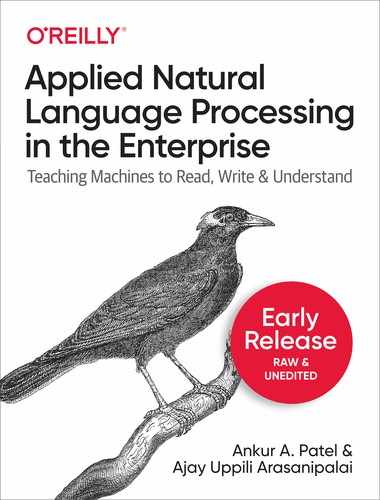0%
8Chapters
0-1Hours read
0kTotal Words
Book Description
NLP is one of the hottest topics in AI today. Having lagged for years behind other deep learning fields such as computer vision, NLP only recently gained mainstream popularity. Google, Facebook, and OpenAI have open-sourced large pretrained language models, but many organizations today still struggle with building and adopting NLP applications. This hands-on guide helps you learn the process quickly.
If you have a basic to intermediate understanding of machine learning and programming experience with Python, you’ll learn how to build and deploy real-world NLP applications in your organization. Authors Ankur Patel and Ajay Uppili Arasanipalai walk you through the process without bogging you down in theory.
- Understand how state-of-the-art NLP models work
- Learn the tools of the trade, including frameworks popular today
- Perform NLP tasks such as text classification, semantic search, and reading comprehension
- Solve problems using new models like transformers and techniques such as transfer learning
- Build NLP models from scratch with performance comparable or superior to out-of-the-box systems
- Deploy your models to production and maintain their performance
- Implement a suite of NLP algorithms using Python and PyTorch
